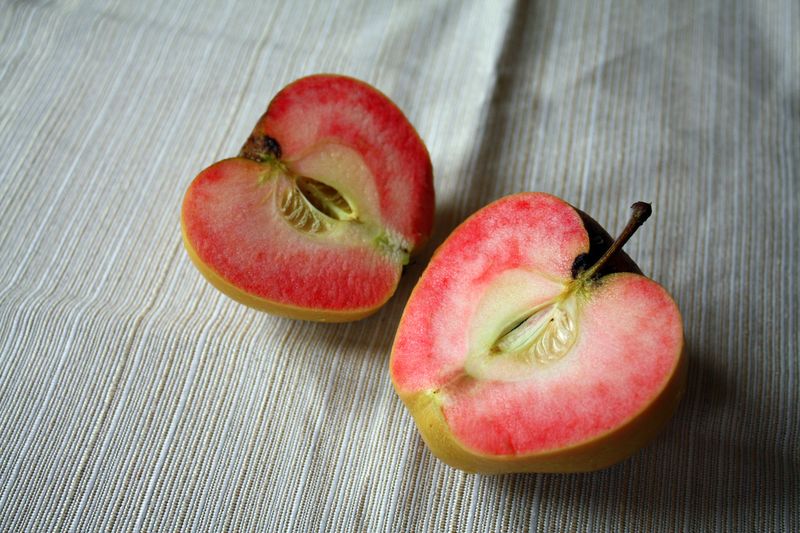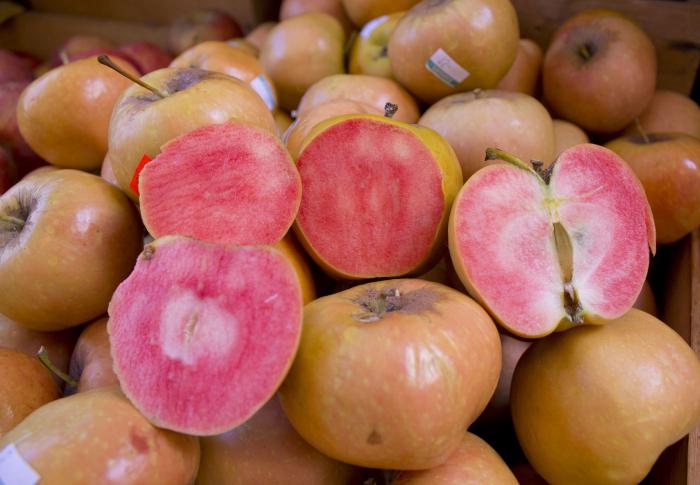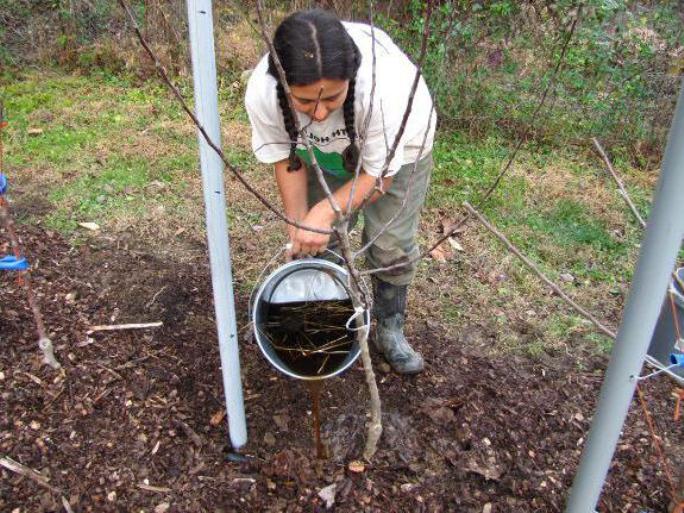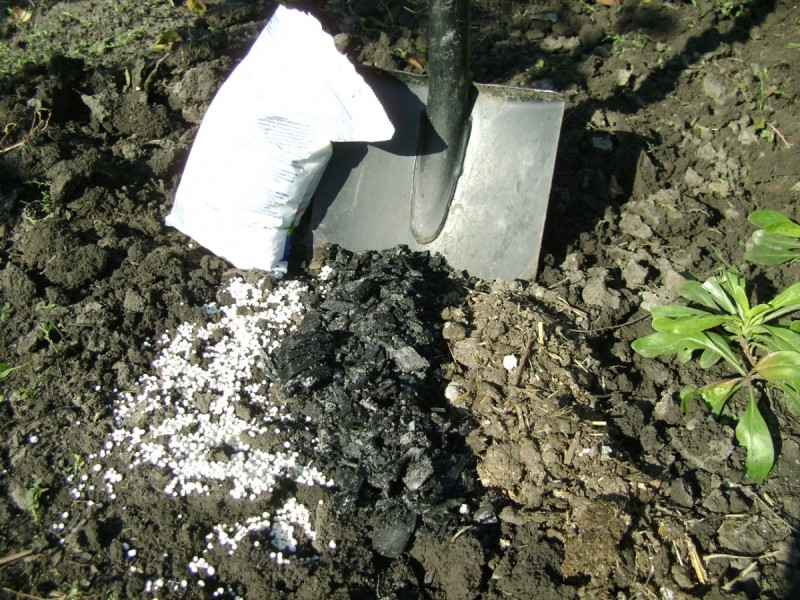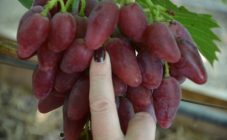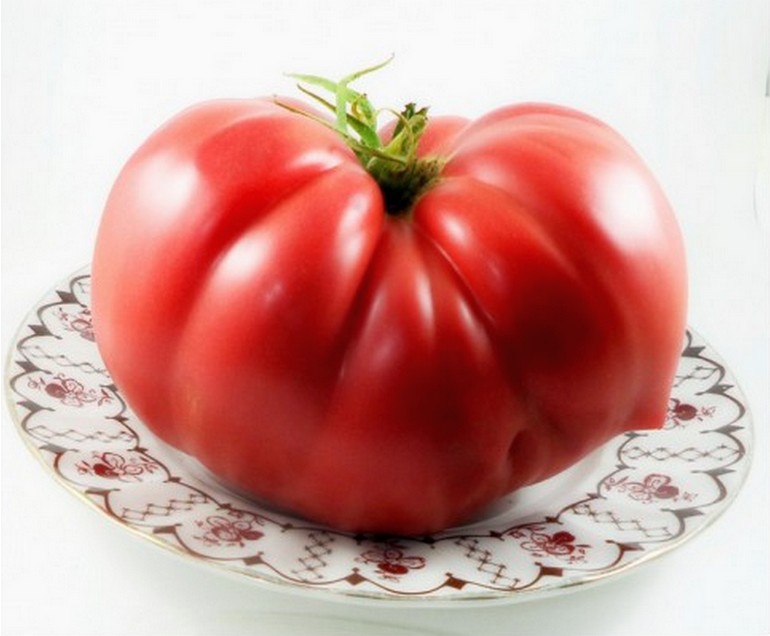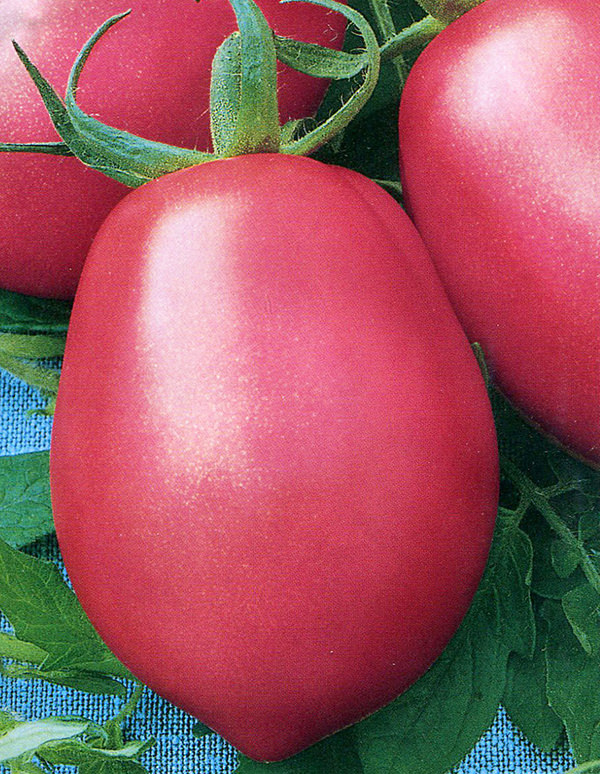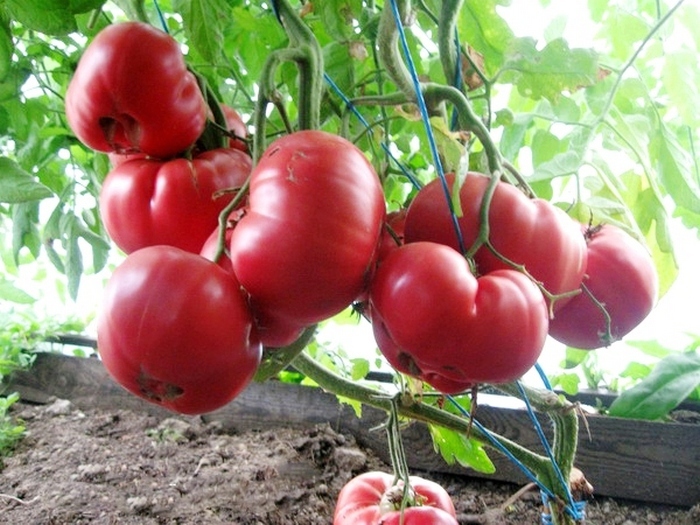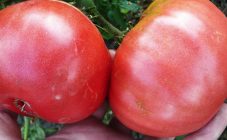Content:
This apple variety was developed and described in detail in the last century by the Californian agronomist Albert Etter, although at the very beginning of its inception, I.V. Michurin, but he had many species with similar features. It is believed that American breeders took as a basis the works of Ivan Vladimirovich and received a new variety and for its unusual color awarded the name Pink Peal, that is, the apple tree Pink pearl. The variety has a specific taste and a unique look that cannot be confused with any other kind of apple trees. The pulp has a pearl tint and a large amount of juice. The variety is widespread in the United States because it does not require much care. In Russia it can be found among gardeners who love exotic plants, they call it in the folk way - "pink apple tree".
Description of the variety
Apple variety Pink pearl belongs to winter varieties of apples, which are characterized by early maturity with late summer ripening. The plant is self-fertile, so it needs pollinators. They do not have to be insects, they can be other varieties of summer pollination apple trees.
This variety, like the Pearl apple tree, with which it is constantly confused, is suitable both for growing in specialized greenhouses and for home breeding. Belongs to natural semi-dwarfs, because the trees grow up to 4.5 m without pruning. They are characterized by moderate growth, each year the growth is about 0.5 m. Flowers of a magnificent pink color. Fruiting is periodic.
The fruit itself is of medium size, yellow-green or creamy in color with an almost transparent skin. The pulp is bright red with a rainbow tint. The fruits of the apple tree are pearl, large (150-200 g on average), juicy, fine-grained, have a tart taste with the smell of raspberries and grapefruit. Shelf life reaches 4 weeks storage in a dark, cool place. Their low calorie content makes them a tasty dietary product, and their systematic use contributes to weight loss. Also, the fruits are rich in vitamins, fiber and contain a high percentage of iron.
During the tasting analysis of the taste, the grade was given an average rating. Use fruits in their natural form, cooking, baking, and also in the form of juices. Due to the unusual aromatic smell with the taste of spices, they are used to make spicy dishes, and crushed grains are added to pepper mixtures.
Features of planting and caring for trees
To get the first harvest of Pink Pearls, it is enough to know a few rules.
Landing
Like other varieties of apple trees, Pink pearls are not very distinguished by the peculiarities of agricultural processing of trees. The species prefers to grow in areas that are rich in sunlight and preferably not windy.
If the soil is too waterlogged, then you need to install a drainage system. The seedlings themselves are planted 4-5 m apart in pre-prepared soil.
How to do it:
- Peat is mixed together with a fertile soil layer and various vitamins (wood ash in an amount of 0.3 kg and potassium superphosphate 0.25 kg). These actions help to reduce the subacidity of the land.
- The resulting mixture is poured into a hole prepared for planting a tree by 1/3, a stable peg is placed in the center, to which a tree is subsequently tied to fix it.
- Plants are placed according to the peg. It is necessary to spread the roots, cover everything with earth and carefully tamp it. At a height of 5-6 cm above the ground, the root collar should protrude; in the future, an apple tree trunk will form in this place.
- The plant needs to be watered: 2-3 buckets of water will be enough for the first day. Next to the trunk, the soil should be covered with peat or sawdust so that the soil does not crack and dry out later.
Pruning
A mature tree is 3-5 m tall, so the plant needs to be pruned every year. It affects:
- branches that increase in number;
- leaves, providing optimal access to light and air, because in insufficient lighting, the color of the fruit will not be saturated, which means it may lose its unique taste;
- winter hardiness, since pruning is part of the preparation of the apple tree for the cold season.
Remove the branches in the center and those that form the backbone of the tree by 1/3. While the apple tree is young (5-6 years old), the crown should be actively pruned, leaving 5-7 skeletal branches. But it is important to bear in mind that seedlings (1-3 years old) should not be pruned after the growing season, the tree can get sick. This variety of apple trees is columnar, so this must be taken into account when planting. The older the apple tree, the more (within reason) you need to prune it.
Top dressing
The tree should be fed with special mixtures every year so that the pink apples do not lose all their properties. You should know that feeding is not needed in the first year, because during planting the soil is already fertilized, and an excess of substances can easily destroy a fragile seedling.
Feeding stages:
- Spring. The soil should be dug up and a nitrogen-containing agent should be added: organic or mineral. The first fertilizers include mullein or compost, and the second - ammonium nitrate and urea. Any of these substances are introduced into specially made depressions to a depth of 30 cm.
- Time of flower formation. A queue of liquid fertilizers. For example: infusion of urea (50 g per 10 l of water), a mixture of superphosphate (30 g per 10 l of water).
- Fall. Top dressing in dry form. A mixture of superphosphate is prepared together with potassium sulfate. The ingredients are taken in equal proportions of 300 g.
Pros and cons of Pink Pearl
Advantages:
- frost resistant variety;
- unusual color and taste of the fruit;
- high vitamin C content.
Disadvantages:
- low scab resistance.
Compared to other apple varieties, Pink Pearl benefits in many ways. Due to its characteristics and unpretentious care, it has every chance of becoming the most famous variety in the country.
